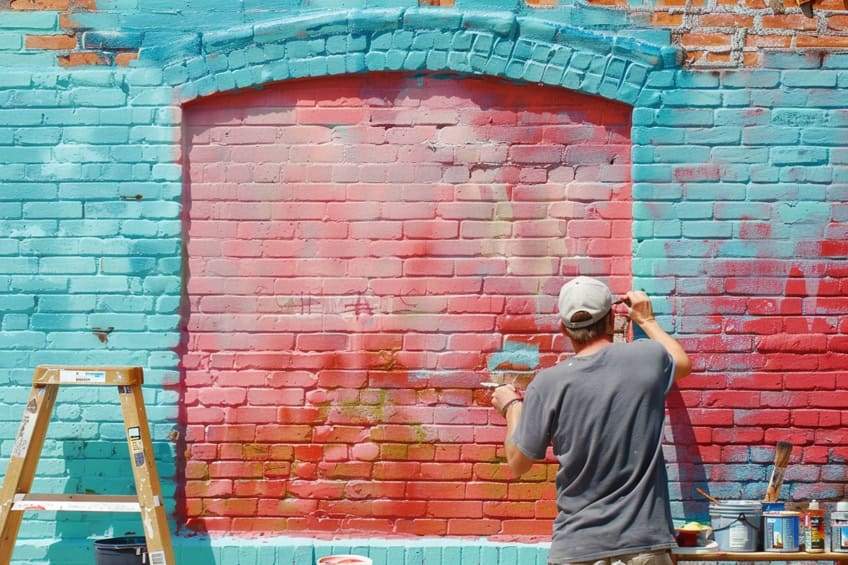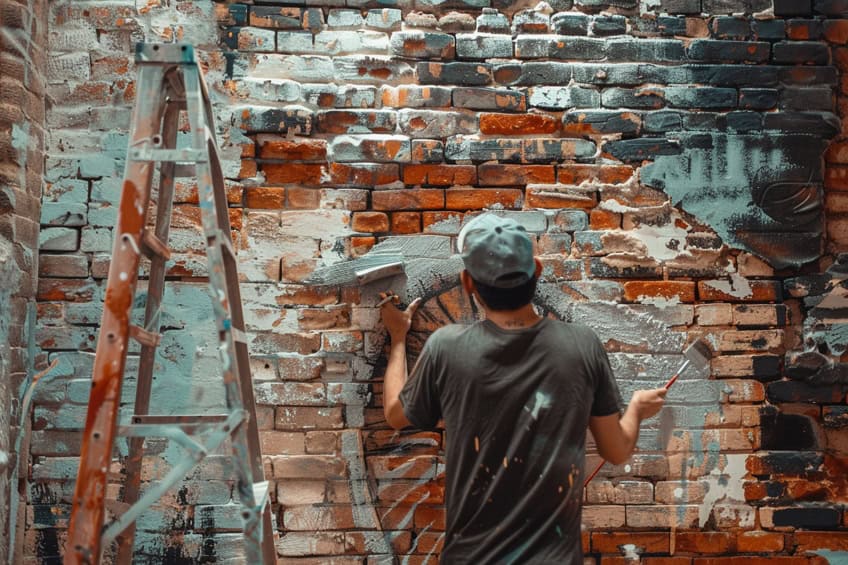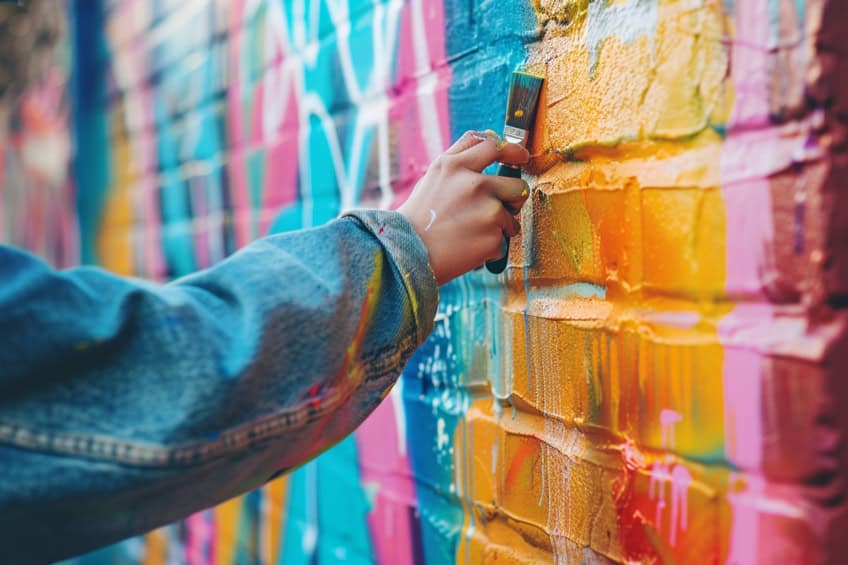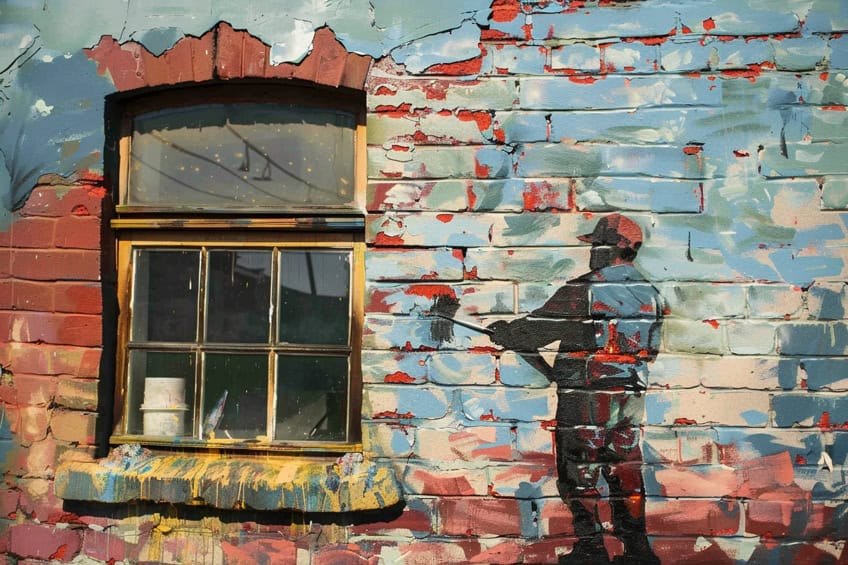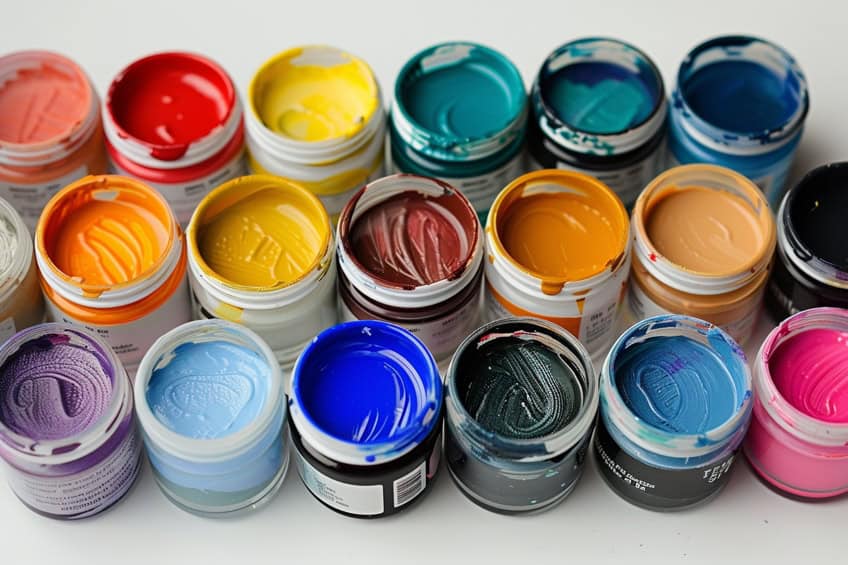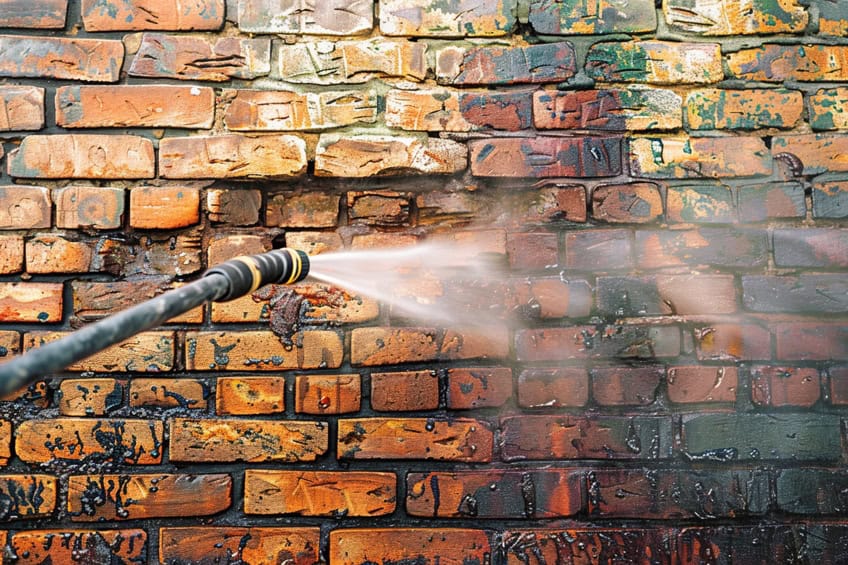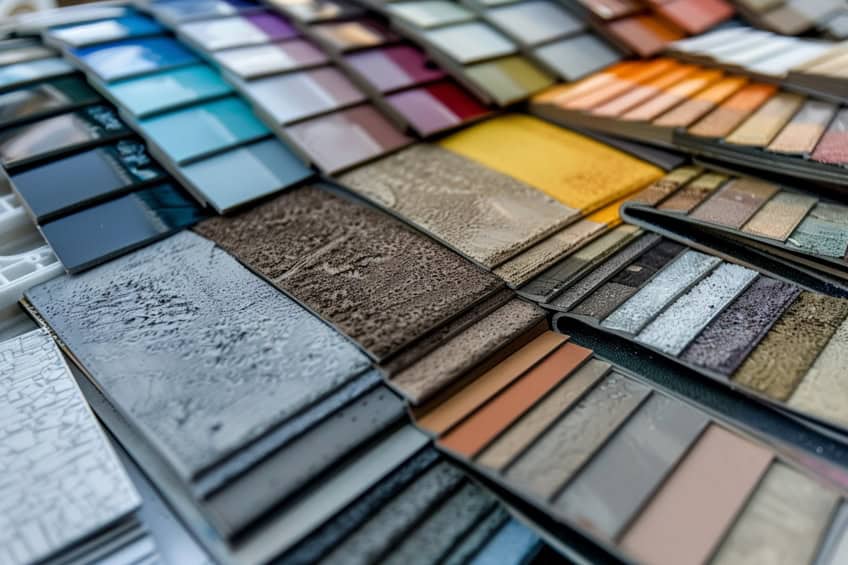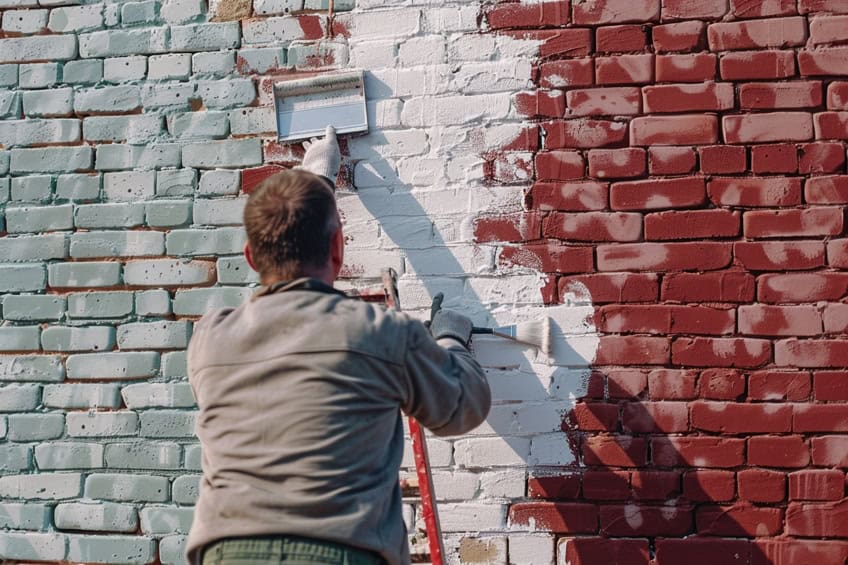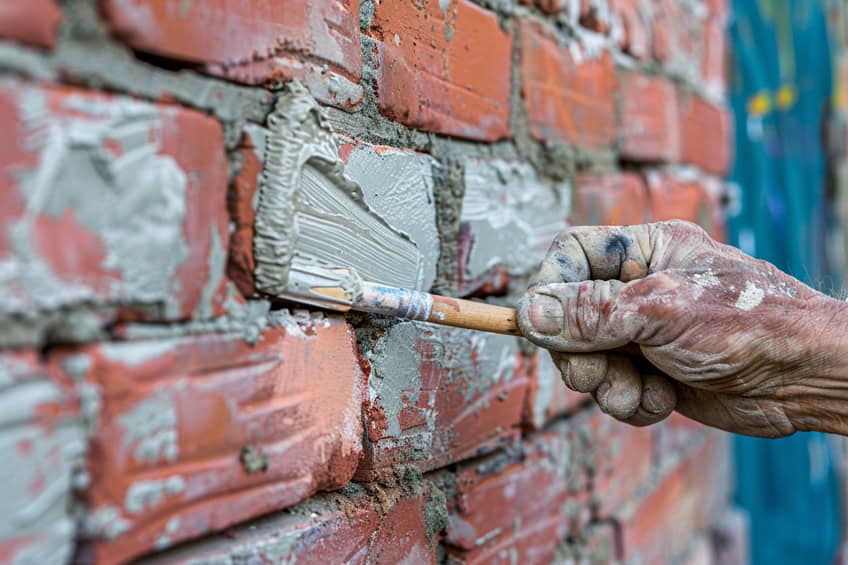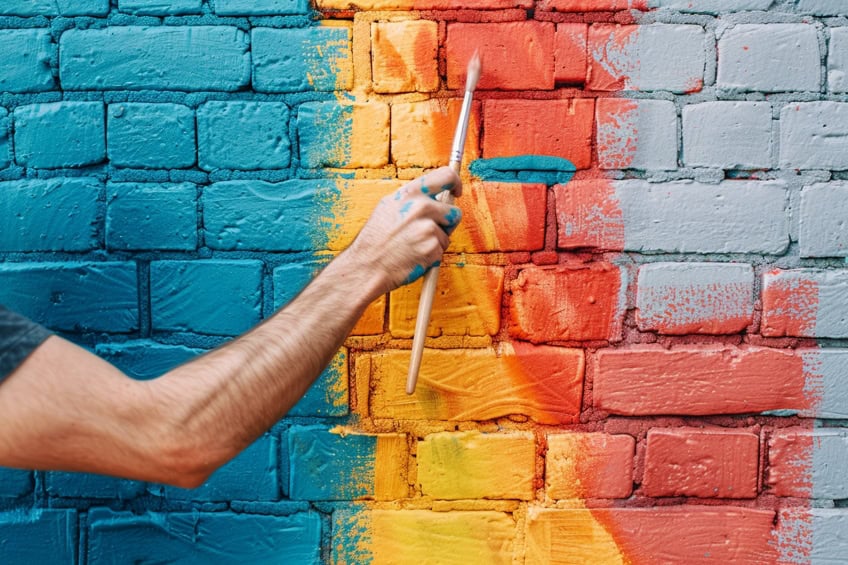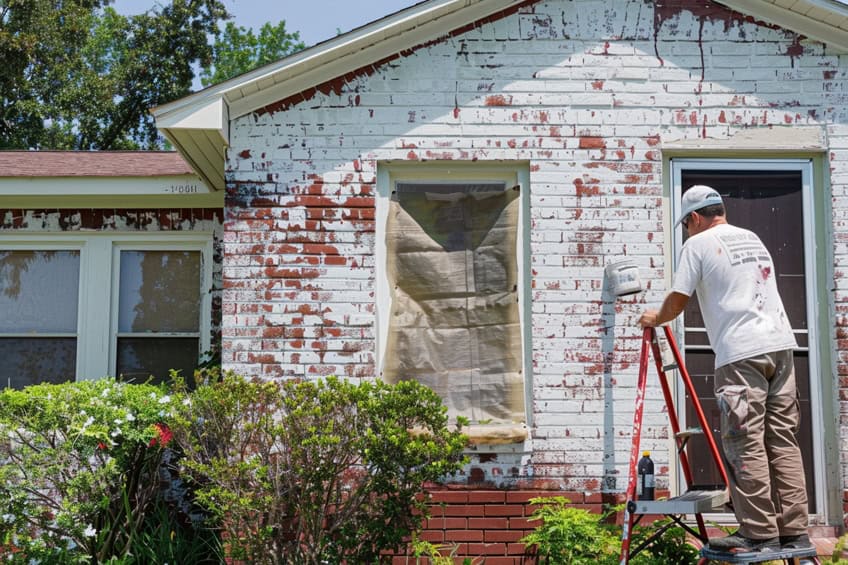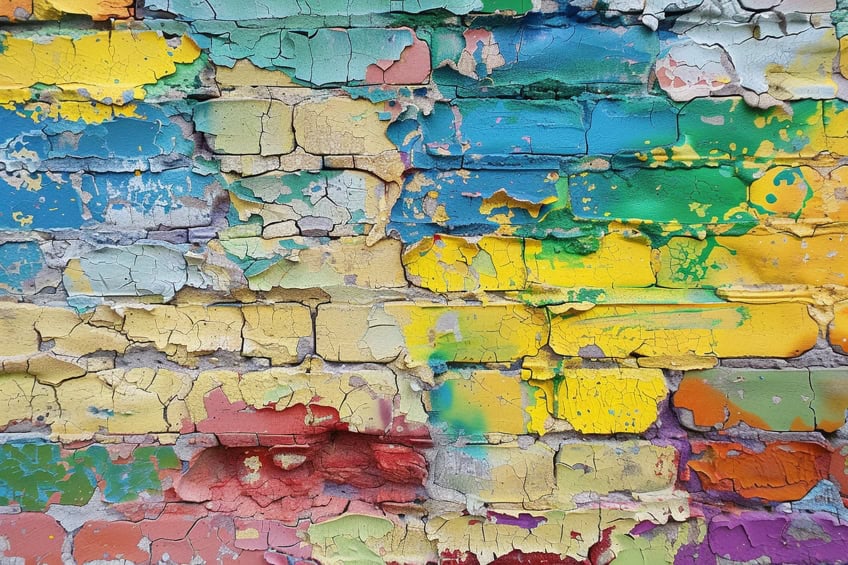Masonry Paint Guide – A Fresh Facade
This post may contain affiliate links. We may earn a small commission from purchases made through them, at no additional cost to you. You help to support resin-expert.com
Welcome to the colorful world of masonry paint! If you’re ready to transform your exterior walls into vibrant statements or give your indoor surfaces a durable and stylish finish, you’re in the right place. In this guide, we’ll dive into everything you need to know about masonry paint, from choosing the perfect shades to mastering application techniques like a pro. Get ready to unleash your creativity and add a splash of personality to your spaces with the power of paint!
Table of Contents
Key Takeaways
- Masonry paint serves both protective and aesthetic functions on various building surfaces.
- Choosing the correct type of paint and preparation method significantly enhances the lifespan and appearance of masonry.
- Proper application technique is critical for maintaining the masonry’s condition and reducing future maintenance tasks.
What Is Masonry Paint?
Masonry paint is a specialized coating designed specifically for application on brick, stone, cement, and other masonry surfaces. Its unique formula allows it to provide not only an aesthetic upgrade but also a layer of protection against various environmental elements. Choosing the right masonry paint is crucial to enhance the durability and resilience of exterior walls. It resists weathering, prevents water absorption, and combats fungal growth, ensuring longevity and maintaining the appearance of the structure over time.
Selecting the optimal product involves understanding the specific benefits that different types of masonry paints offer, whether it’s a silicone-based option that repels water or a breathable formula that prevents moisture build-up within walls. Additionally, technique and application methods play a significant role in achieving a long-lasting finish. Surface preparation, including priming and correcting any flaws, should not be overlooked as it lays the groundwork for a successful paint job.
Proper application can lead to reduced maintenance needs and an enduring, attractive finish that stands the test of time.
What Paint Do You Use on Masonry?
Masonry surfaces require a specialized type of paint to ensure durability and a quality finish. The ideal choice is acrylic masonry paint, designed to adhere to the porous texture of concrete and brickwork.
Characteristics
- Long-lasting: It withstands harsh environmental conditions.
- Flexible: Adapts to temperature fluctuations without cracking.
- Porous: Allows the masonry to breathe, reducing moisture build-up.
Application Tips
- Clean the surface thoroughly before painting.
- Use a roller and tray for even application.
- Consider utilizing extending rollers for higher areas.
- Primer may be necessary for better adhesion and coverage.
When painting masonry, it’s critical to check the weather conditions. Paint should not be applied during rain or in very cold temperatures, as this can impact the drying process.
Understanding Masonry Paint
Masonry paint is a specialized product designed to provide a durable and weather-resistant finish for various surfaces, including brick, concrete, and stucco. It caters to the need for aesthetic appeal as well as protection from the elements.
Composition and Types
Masonry paint typically consists of water-based resins that allow breathability, thereby preventing moisture buildup which could lead to damage. Acrylic resins are commonly used due to their flexibility and color retention properties.
These paints often include pigments that contribute to a vast array of color choices, as well as additives that provide protection from UV rays and mildew.
There are several types of masonry paints available:
- Acrylic masonry paint: Known for its excellent adhesion and versatility.
- Silicate masonry paint: Chemically bonds with masonry surfaces, ensuring exceptional durability.
- Silicone masonry paint: Provides a super hydrophobic quality that minimizes water absorption, making it suitable for exterior walls.
Choosing the Right Masonry Paint
The choice of masonry paint should be based on the surface’s characteristics and the environmental conditions to which it will be exposed. For example:
- For textured surfaces: Textured masonry paint can mask imperfections and is preferred for its ability to give depth and interest to the surface.
- For high-traffic areas: A high-quality masonry paint that resists frequent cleaning or heavy wear and tear should be chosen.
When selecting masonry paint, it is essential to ensure that it is specifically formulated for the intended surface and environment to achieve optimal results.
Surface Preparation and Priming
Proper surface preparation and priming are crucial to ensure that masonry paint adheres properly and has a long-lasting finish. Thorough cleaning, mending imperfections, and selecting the right primer are the foundational steps for any successful masonry painting project.
Cleaning and Repairs
Before priming, it is essential to clean the masonry surface to remove any loose mortar, dust, dirt, or foreign material. Using a stiff brush, one should clean the surface vigorously to ensure that no debris remains. If there are holes or cracks present, they must be filled with a suitable filler to create an even surface. All surfaces must be dry with a pH between 6 and 9, and any grease or oil should be removed, as they can prevent adhesion of the paint.
- Dirt removal: Brush off any loose dirt and debris.
- Grease/oil elimination: Use a degreaser if necessary.
- Fill holes/cracks: Use spackling paste or masonry filler.
- Surface smoothing: Sand any rough areas to even out the surface.
Primer Selection and Application
Selecting the appropriate masonry primer is vital as it serves as a binding agent, improving the adhesion of the masonry paint. The primer should be applied on a clean, dry surface and allowed the recommended drying time before applying paint. Priming helps to seal the masonry, preventing moisture penetration, which can be detrimental to both the paint’s appearance and its longevity. Key points to remember include:
- Even coverage: Ensure all surfaces are covered without over-application.
- Drying: Allow the primer to dry completely, according to manufacturer specifications, before painting.
By meticulously preparing the surface and properly applying primer, the paint job will have a robust foundation, leading to a better finish and increased durability.
The Best Paints for Masonry
Selecting the right masonry paint is crucial for durability and aesthetic appeal. The market offers options like Emperor Masonry Paint with its premium pricing and performance, Armstead Trade’s reliability, and the specialized formulations of Dulux Trade Weathershield Maximum Exposure designed for extreme conditions.
Emperor Masonry Paint
Emperor Masonry Paint is known for its high-quality finish and longevity. With options available in various colours, it comes at a premium price point. For those looking for an investment in their property’s appearance and weather resistance, Emperor is a commendable choice.
- Colors: Available in a standard range, with Tikkurila Finngard offering a full palette.
- Characteristics: Noted for its durability.
Armstead Trade Masonry Paint
Armstead Trade is synonymous with reliable performance at an accessible price. Used widely by professionals, Armstead masonry paints offer a balance of quality and value, making them a go-to for various projects.
- Application: Known for good coverage and ease of use.
- Durability: Offers resistance against the elements for long-lasting finish.
Dulux Trade Weathershield Maximum Exposure
Dulux Weathershield has been formulated for extreme weather conditions. It is designed to provide a durable barrier against harsh environments, ensuring a finish that can withstand the test of time.
- Specialization: Best suited for adverse weather conditions.
- Reputation: Trusted for its resilience and protective qualities.
Painting Technique and Application
The application of masonry paint requires precision and attention to detail to achieve a long-lasting result and professional finish. This guide will walk through the essential steps and techniques for applying masonry paint properly using the right tools and materials for a consistent coverage and ideal appearance.
Tools and Materials
Before beginning, gather all necessary tools and materials for an organized painting process:
- Brushes: Choose synthetic bristle brushes for edging and detail work.
- Rollers: Use long-nap rollers for larger, flat surfaces.
- Paint tray: Essential for holding paint and rolling out excess.
- Ladder: To reach higher areas safely.
- Drop cloths: To protect the surrounding area from drips.
Applying the First Coat
Start with properly mixed paint to ensure even consistency. Using a brush, cut in at the corners and edges, taking care not to leave drips or runs. For the main surface, dip the roller into the paint, roll off any excess in the paint tray, and apply the first coat using even, vertical strokes. Achieve good coverage by overlapping each pass slightly. Allow the first coat to completely dry before applying the second coat.
Second Coat and Finish
After the first coat dries thoroughly, inspect for any missed spots or uneven texture. Apply the second coat in a similar manner as the first, using smooth, vertical strokes for consistency. The second coat will enhance coverage, even out the appearance, and contribute to a more durable, matte finish.
Remember to allow ample drying time before exposing the freshly painted surface to moisture or touch.
Maintenance and Durability
Masonry paint not only enhances curb appeal but also serves as a protective shield for exterior walls. The durability of masonry paint is influenced by its resistance to weather conditions and the maintenance practices followed.
Weatherproofing and Protection
Masonry paint offers significant protection against various weather conditions, including sun exposure, rain, sleet, and snow. Quality masonry paint forms a weatherproof barrier, reducing the risk of peeling and flaking. The right choice of paint can prolong the lifespan of the exterior walls made from concrete, stone, or other masonry materials. Benefits include:
- Prevents water intrusion
- Minimizes damage from UV rays
- Reduces weathering effects
Cleaning and Touch-Ups
Proper maintenance involves regular cleaning and performing touch-ups as necessary. It is imperative to follow the manufacturer’s recommendations when cleaning masonry to prevent damage to the painted surface. Clean-up includes:
- Gentle wash with appropriate cleaners
- Immediate repair of minor chips and cracks
- Scheduled inspections for early detection of issues
Additives in the paint can enhance durability and decrease the frequency of maintenance tasks. Regular maintenance ensures the masonry paint job remains intact, preserving both durability and curb appeal.
As we wrap up our masonry paint guide, remember that painting is not just about color; it’s about expressing yourself and creating spaces that reflect your unique style. Whether you’ve chosen bold hues to make a statement or opted for subtle shades to harmonize with nature, your paint choices can truly transform a space. So, grab your brushes, unleash your imagination, and let the magic of masonry paint continue to bring color and character to your world!
Frequently Asked Questions
What Is the Best Type of Primer to Use With Masonry Paint?
The primer choice depends on the paint type and the surface condition. Acrylic primers work well with acrylic masonry paint, while silicate primers should be used with silicate paint for a strong chemical bond.
Can Masonry Paint Be Used on Concrete Surfaces Effectively?
Yes, masonry paint can be applied to concrete surfaces. To achieve effective adhesion and longevity, the surface must be clean, dry, and free of any loose material.
What Are the Benefits of Using Silicone-Based Masonry Paint?
Silicone-based masonry paint provides excellent water-repellent properties, creating a hydrophobic surface that greatly reduces water absorption. It also offers self-cleaning characteristics, keeping exterior walls cleaner.
Should I Apply Masonry Paint With a Brush or Roller for Optimal Results?
For an even coverage and optimal results, masonry paint can be applied with either a brush for precision in smaller areas or a roller for larger surfaces. The method used will often depend on the painter’s preference and the surface’s accessibility.


